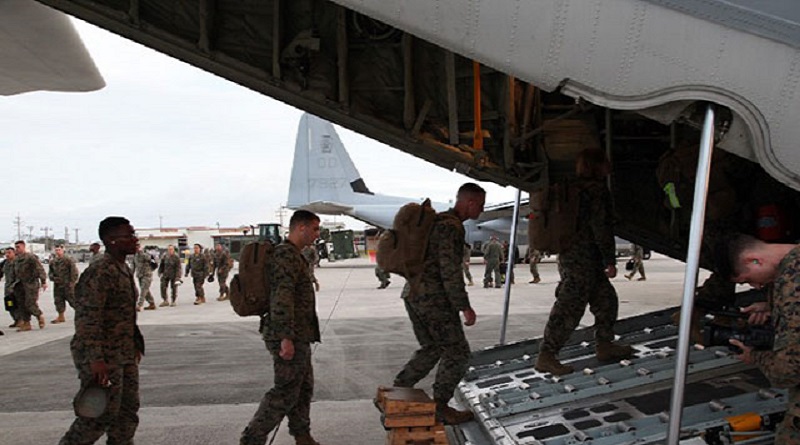US slammed for using Yolanda to justify military presence in Philippines
News Release
October 18, 2016
The umbrella group Bagong Alyansang Makabayan said that US “humanitarian and disaster response” in the aftermath of superstorm Yolanda (Haiyan) did not arise from the sheer benevolence of a superpower. The group said that the massive deployment of military assets in Samar and Leyte was a well-calculated pitch for the approval of the Enhanced Defense Cooperation Agreement which would bring US bases back to the Philippines.
“Three years after Yolanda, US has spared no effort to remind us of their so-called benevolence in the aftermath of the storm. However, behind the latest humanitarian rhetoric is the reality that the US merely wishes to justify its continuing military presence in the Philippines. Of all the countries that offered aid in the aftermath of the storm, it is only the US that sought a military pact such as EDCA. Of all the countries that offered aid, it is only the US that wanted to establish military bases in the country,” said Bayan secretary general Renato M. Reyes, Jr.
“That is not aid. That is not goodwill. That is taking advantage of a country’s suffering. The US should stop invoking humanitarianism when all it wants to accomplish is keeping the Philippines under its heel,” he added.
For many analysts, the US Yolanda operations could not have come at a more opportune time, when the US was in the midst of its pivot to Asia.
Jonathan Bogais of the University of Sydney situates the US deployment in Eastern Visayas within the negotiations for greater US military access to the Philippines and the US agenda in Asia. “In the midst of this humanitarian tragedy, Typhoon Haiyan has delivered the means for the US to show solidarity to its Pacific ally. It has also allowed the US to send a clear message to China that it has the muscle needed to intervene at short notice in the region to protect its (US) national interest if it feels it necessary,” Bogais said.
In another article entitled “Military’s aid operations help promote US interests”, Dan De Luce of the Agence France-Presse noted that “the rapid deployment of US naval ships, cargo planes, helicopters and troops to the Philippines after Typhoon Haiyan underscores America’s growing emphasis on disaster relief missions. These are seen as a strategic tool, allowing the United States to exert ‘soft power’ through means usually tied to ‘hard power’.”
“The US military’s relief efforts in the storm-ravaged Philippines will save lives, but also illustrate how humanitarian operations promote Washington’s interests in the Asia-Pacific,” the article said.
The growing emphasis on disaster response is also evident during the annual Balikatan exercises between the US and the Philippines and has been used a justification for the permanent and continuing presence of the US military in the country under the Visiting Forces Agreement.
“This (disaster response) is a classic example of why we need to be forward deployed and forward engaged, why we conduct theatre security cooperation, why we establish these relationships,” De Luce quotes a senior Marine Corps official.
“The speed with which US forces are able to respond to Typhoon Haiyan highlights the importance of the humanitarian assistance and disaster relief exercises we carry out regularly in the Asia-Pacific,” de Luce quotes Pentagon spokesman George Little.
US deployment in Eastern Visayas took place during the negotiations for expanded US access to the Philippines’ bases and ports. Quite predictably, no less than the Philippine own Foreign Affairs Secretary justified the need for the EDCA just three weeks after Yolanda.
“What [we have seen] in Central Philippines as a result of this typhoon, and the assistance provided in terms of relief and rescue operation … demonstrates the need for this framework agreement (EDCA) that we are working out with the United States for increased rotational presence. It accentuates one of the main purposes of this framework, which is to make humanitarian assistance and disaster relief and response one of the major aspects of this agreement,” del Rosario told the media. ###
*Photo credits to Rappler
Source: http://www.bayan.ph/2016/10/18/us-military-presence-in-ph/

